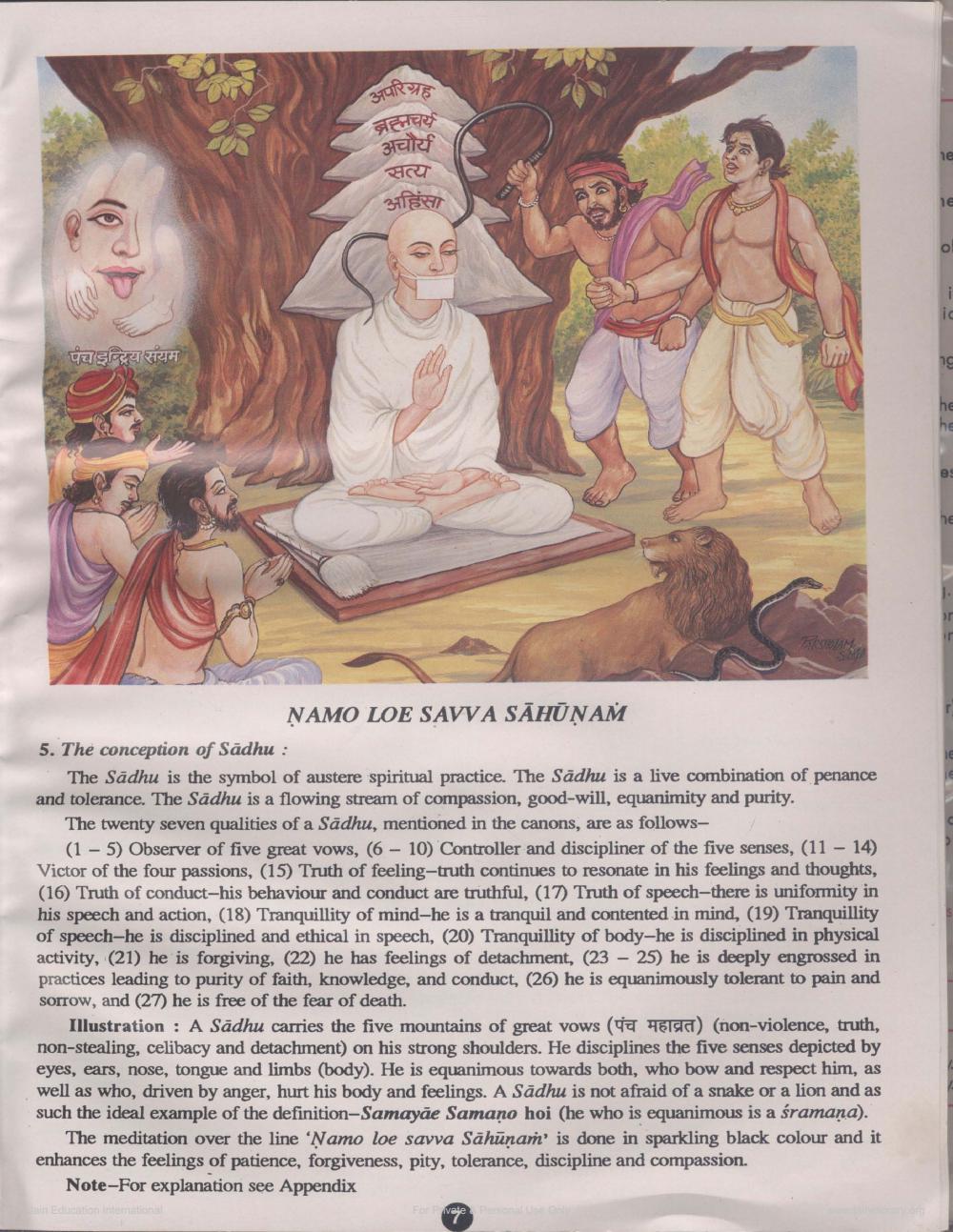________________
अपरिग्रह
ब्रह्मच
अचौर्य
सत्य अहिंसा
पंचाइन्द्रिय संयम
NAMO LOE SAVVA SĀHŪŅAŃ 5. The conception of Sadhu :
The Sadhu is the symbol of austere spiritual practice. The Sādhu is a live combination of penance and tolerance. The Sädhu is a flowing stream of compassion, good-will, equanimity and purity.
The twenty seven qualities of a Sadhu, mentioned in the canons, are as follows 7
(1 - 5) Observer of five great vows, (6 - 10) Controller and discipliner of the five senses, (11 - 14) Victor of the four passions, (15) Truth of feeling-truth continues to resonate in his feelings and thoughts, (16) Truth of conduct-his behaviour and conduct are truthful, (17) Truth of speech-there is uniformity in his speech and action, (18) Tranquillity of mind-he is a tranquil and contented in mind, (19) Tranquillity of speech-he is disciplined and ethical in speech, (20) Tranquillity of body-he is disciplined in physical activity, (21) he is forgiving, (22) he has feelings of detachment, (23 - 25) he is deeply engrossed in practices leading to purity of faith, knowledge, and conduct, (26) he is equanimously tolerant to pain and sorrow, and (27) he is free of the fear of death.
Illustration : A Sadhu carries the five mountains of great vows (19 HESA) (non-violence, truth, non-stealing, celibacy and detachment) on his strong shoulders. He disciplines the five senses depicted by eyes, ears, nose, tongue and limbs (body). He is equanimous towards both, who bow and respect him, as well as who, driven by anger, hurt his body and feelings. A Sadhu is not afraid of a snake or a lion and as such the ideal example of the definition-Samayāe Samano hoi (he who is equanimous is a śramana).
The meditation over the line ‘Namo loe savva Sāhūnaṁ is done in sparkling black colour and it enhances the feelings of patience, forgiveness, pity, tolerance, discipline and compassion. Note-For explanation see Appendix
E eyes
and detambs (bodyay and




